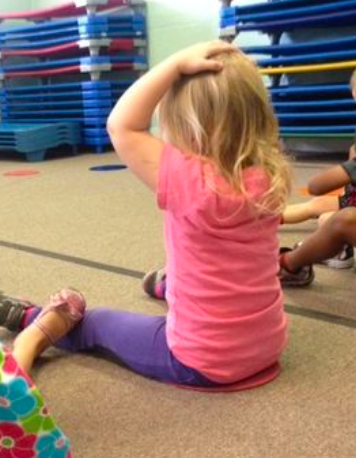Core Strength is a big part of our functional everyday life, though we don’t think about it very often. Core strength is what holds our bodies up, gives us good posture, keeps our backs from working too hard and makes our daily tasks easier. We know we grown-ups need strong midsections but so do our kids.
Before we go any further, lets first define the core. Think of it as every part of the body except the arms, legs and head. This leaves the abs, but also the back, glutes and chest. This is the core.
- Core Strength is Functional
Kids are more active than adults, there is no question about it. And they should be. They are still growing and developing muscles and a skeleton for life. Core strength is an integral piece of this. Like grown-ups, kids need strong abdominal musculature because it makes everyday life easier. Every movement that the human body makes whether it is going up stairs, dodging a ball in PE, or writing, starts in the core. The stronger the core, the more efficient the step, dodge or pencil stroke. As babies, we had big heads and bodies, and tiny appendages. That was because all the work needed to be going on in the bigger parts — the cardiovascular system to keep us alive, the digestive system to keep us fueled and the brain to keep us learning and managing all the other parts. The appendages were non-essential. But as the body and brain grow and get stronger, the appendages become longer and more active. The stronger the center parts of the body, the more efficient, coordinated and smooth moving the appendages. It leads to controlled and efficient crawling, walking and ultimately learning. Which brings me to reason 2.
- A Strong Core is Closely Related to Strong Gross and Ultimately Fine Motor Skills.
As babies grow, they start developing gross motor skills: rolling over, scooting, crawling, cruising and then walking. This doesn’t stop. As preschoolers, they begin hopping, jumping, skipping and galloping. They begin to cross the midline of the body. They go up stairs alternating feet. Where you see delays in these stages you often find poor core strength.
Ultimately, as we develop gross motor skills we also develop fine motor skills: holding something small, bringing it to the mouth, putting small toys in small holes, holding a crayon, writing, etc. Again, the stronger the trunk, the more the appendages are well controlled and the gross and then the fine motor skills are more accurate and well executed.
- Strong Cores = Big Brain Power
According to the Compass Group at the University of Sydney, incorporating core strength activities into classroom work leads children to be more attentive and more easily able to concentrate. This arises from their ability to sit at their desks comfortably. Children who slouch at their desks, pull one leg underneath to sit on and switch legs and wiggle constantly, usually have poor posture and poor core strength. This inability to sit still or get comfortable makes a difficult environment for concentration, listening and learning.

This is an example of excellent core strength: long straight legs; long straight back. Putting her hands on her head was an extra challenge we added in and which she conquered easily. If core strength were weak, more than likely this preschooler would have her pelvis rolled under, her knees bent and her hands behind her for support.
How do you Determine Poor Core Strength?
For younger children (ages 3-7) the simple act of sitting criss-cross applesauce is a core strength exercise. If a child cannot sit unassisted in that position they probably have weak core muscles. Usually children with weaker cores will not chose to sit this way, or will briefly sit with hands behind the back for support before shifting to another position. If asked to remove their hands from behind, children with inadequate trunk musculature will roll the top of the pelvis backwards, bend their knees and look for support with the hands.
Older preschoolers who W-sit as a preferred position are also frequently lacking in trunk strength. W-sitting means that the legs are turned out from the body insteps facing down and heels are near the hips, knees bent – the legs make a “W” shape on the floor. Sitting this way gives a child more stability while presenting zero opportunity to improve strength in the core muscles. W-sitting also can inhibit crossing the mid-line of the body and the development of a dominant and helper hand.
For elementary age kids, as mentioned, weak core strength can be seen with the inability to sit still or a preference to drape the body over the desk, wiggle, change position. Additionally, a child’s struggling to balance on one leg, losing balance easily during gross motor skill activities or sports, general clumsiness and avoiding climbing or playground equipment might point to poor core strength. Children who prefer to lie on the stomach, can’t sit with legs out straight or criss cross applesauce, can’t bear crawl or struggle to climb could be a another indicator of poor core strength.
Improving Core Strength
Great core strengthening activities and play include any game that requires getting up and down off the floor (good way to increase the heart rate too!), climbing, crawling, bear crawling, rolling on the floor with feet tucked in, (back and forth), log rolling, superman games (lying on belly with arms extended and lifting the extended arms off the floor being sure the elbows are also off the floor), tug of war, monkey bars, crab walks, wheel barrow, jumping and balancing. And last, encouraging children to spend some time sitting with their hands on their knees while sitting cross legged on the floor is another way to develop these key muscles.
Keep in mind — grownups need core strength for many of the same reasons!
Photo by Liza Blackburn
